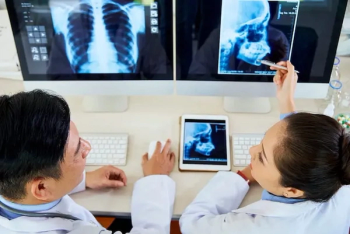
Out in Left Field, But Not Necessarily Feeling Left Out
Clear, consistent communication during COVID-19 is still critical.
Years back, probably on more than one occasion, I wrote of what I considered to be the biggest potential stumbling block in teleradiology: Communication, or failure thereof.
Onsite personnel routinely interact with one another as a result of their proximity. They share reading rooms, attend meetings together, casually chat in hallways, etc. Even indirectly, they glean information from one another, for instance, when overhearing conversations between other colleagues.
Those offsite do not, and, potentially, they dwell in an informational vacuum. They know nothing whatsoever of information that hasn’t been directed to them in some way -- email, phone call, even a good ol’ fashioned written memo. This can be very much off the radar of onsite people, who can easily take routine in-person exchanges of information for granted.
Information is an abundant commodity, especially in complex fields such as ours, and it would be exhausting, bordering on impossible, to convey every detail to the remote folks. Of necessity, some judgment calls happen as to what’s really important for them to know -- both to save the onsite-communicator’s time (and sanity!), and to spare the remotes from a constant onslaught of picayune trifles.
Give people incomplete intel, however, and they’ll fill in the blanks for themselves-whether it be by reasonable conjecture or less-reasonable imagination. Cynical, and especially paranoid minds (which seem to be prevalent in the healthcare field, for some reason), tend to fill those blanks in ways unflattering and unhelpful to a group’s cohesion.
I revisit this topic, however long after I previously wrote about it, because it’s become relevant to a greater proportion of the radiological population in our current COVID-19 world. Way more rads than ever before are now offsite, working from home, for instance, or having their hours reduced, even indefinitely eliminated. Many are wondering when-or if-they’ll be able to come back.
Every single one of these folks spending time away from the group’s onsite operations is going to be starved for information, or at least at risk for feeling uninformed, if proactive moves aren’t made to prevent this.
I’d suggest that group leaders take this very seriously and make a routine showing of information disbursal -- mass-emails, virtual meetings, conference calls, etc., even if the leaders feel like there’s nothing new to report. Those onsite might know there’s no news, but those remote won’t necessarily make this assumption.
Further, just because you have nothing to report doesn’t mean that nobody else has anything to say. The communications mentioned above allow for people to comment or ask questions (make sure your group emails allow folks to publicly respond for all to see!), and such feedback might provoke valuable thought, if not action, by the leadership -- or anyone else in the group.
There are also other reasons why such communal interaction is preferable to a more-haphazard, “Everybody feel free to get in touch with the leadership if you have any questions” type of invitation. Individuals might refrain from taking up such an offer for fear of appearing needy or demanding-especially if they previously inquired, but now have one or more new items of interest. Further, this only results in communication with one person at a time. Not everybody winds up being on the same page, and there’s no reliable way for leadership to keep track of who was told what.
Some sample topics that a group’s remote and/or furloughed members might appreciate hearing about nowadays, perhaps on a weekly basis in the absence of newsworthy developments in-between, to avoid that “out-in-left-field” feeling include:
- Trends in imaging-volume. Are some modalities impacted more than others? Are things getting better or worse? If the group covers or owns more than one facility, are some doing better than others? Are trends sufficient to prompt consideration of restoring (or further cutting) working-hours, pay, etc.?
- Communications from other organizations to the group. Have local hospitals given any updates about when they might start allowing more non-emergent stuff to resume? Has the state or local municipality shared any information about plans for reopening?
- Changes within the group. Has anyone left, such as being let go due to insufficient work-volume or choosing early retirement? Are more personnel changes expected to occur? How will this impact those who remain? Would it be fair to let group members cancel some of the vacation time they scheduled back at the beginning of the year, so they can recoup some lost working hours? Or, to let more members opt into a “call me if volumes get heavy and you need help” list? Might some vacations have to be canceled, if they are scheduled to occur around the time the country “re-opens” and volumes surge?
- Non-radiological work opportunities/requirements. Does the group work with a hospital that is, or might be, “drafting” radiologists to provide ER or ICU coverage? Are there other, more optional, ways members of the group can be productive? Maybe it’s a good time for members or committees within the group to get some administrative stuff done-stuff that would otherwise have taken members away from their worklists if imaging volume were normal.
- Sharing of information about federal or state-level relief. Does everyone in the group know about mortgage forbearance? Has everyone eligible heard about PPP loans? (Does the group itself qualify for one?) How about an Economic Injury Disaster Loan, or other type of loan? Is the group going to receive support from the CARES Act Provider Relief Fund, and if so, how might it be used? Or, if those funds are being directed to facilities which billed for Medicare work that had been done by the group, have those facilities been approached about sharing some of what they receive?
Newsletter
Stay at the forefront of radiology with the Diagnostic Imaging newsletter, delivering the latest news, clinical insights, and imaging advancements for today’s radiologists.




